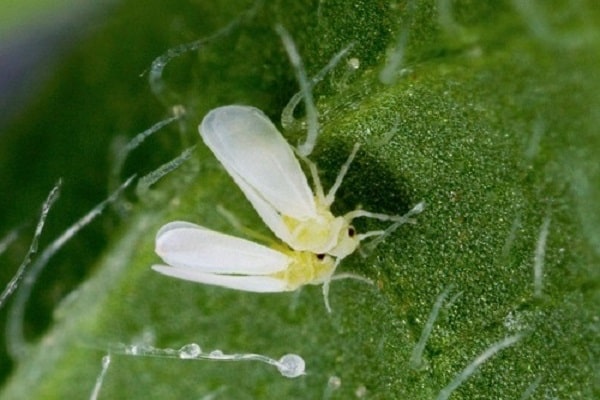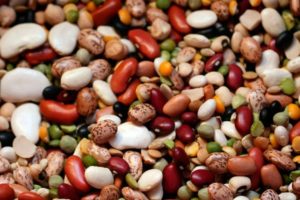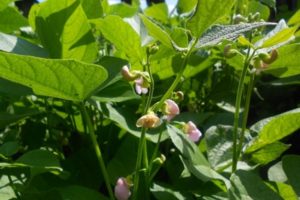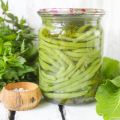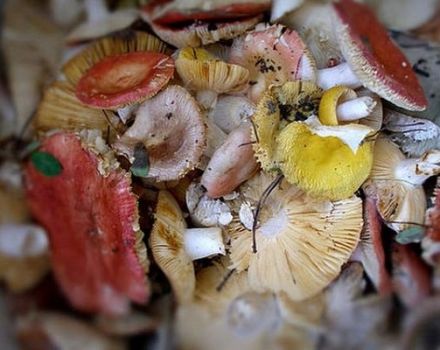Description of varieties of ornamental beans, features of cultivation, planting and care
Ornamental beans fell in love with gardeners for their unpretentiousness in care and cultivation. Its main purpose is to decorate various structures. By planting a crop in their area, gardeners receive not only decorative decoration, but also useful beans, which are famous for their low calorie content.
Characteristics of ornamental beans
Growing ornamental beans won't be a hassle. This unpretentious plant easily copes with the role of a decorative element of landscape design. When culture blooms, it gives an unusual charm to any, even the simplest dacha.

As a rule, culture is woven along the walls. The main thing is to make it a solid support that will not break under the mass of greenery. Ornamental beans grow intensively, bushes reach 5 meters.
Another purpose of the culture is to saturate the soil with nitrogen. This element accumulates in the roots of plants. Many gardeners prefer plant beans between the rows of potatoes, thus increasing its yield by 70%. In addition, the plant prevents the development of late blight, and its deciduous mass is used as compost and fertilizer.

The fruits of ornamental beans are edible, they are rich in vegetable protein, zinc, vitamins A, B, C, E, iron, calcium and other useful microelements. Only purple beans are not used in cooking.
Ornamental bean varieties
If you determine the varieties of ornamental beans by taste, then even the most avid gourmets will not be able to feel the difference. The same applies to the size and shape of the fruit. The only difference between the varieties is the color scheme. Curly beans have many varieties:
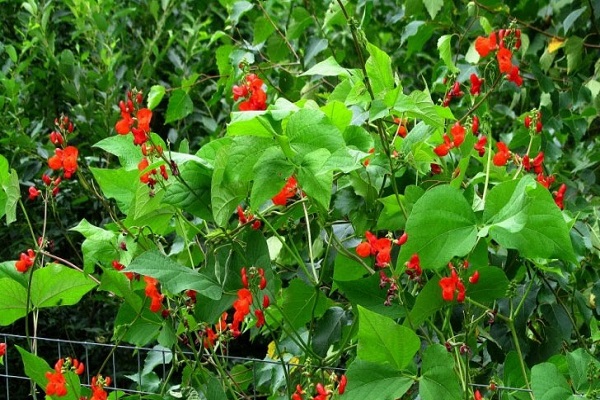
- Purple beans. Named after the color of the flowers. Gardeners prefer this culture for its attractive appearance. The variety is used as a decorative decoration, its fruits are inedible.
- Bean variety Golden nectar. It is characterized by an unusual yellow-gold color of the shoulder blades. Suitable for those who love asparagus beans. In cooking, immature pods of this culture are used.
- Spanish white. It is characterized by large beans, which makes it stand out against the background of other hulling varieties. Its fruits are large, they cook quickly because they have a thin skin. This variety is great for making borscht, stews, canning and stewing. Only grains are eaten, the pods of this variety are not edible.
- Borlotto beans. Already by the name it can be determined that the homeland of this variety is Spain. Nevertheless, domestic gardeners also fell in love with it.This curly cultivar blooms with red flowers and produces flat fruits with a marbled, dark red pattern. 4-5 grains are extracted from one pod. As it ripens, a dark pattern appears on the fruit.
- Bean variety Green giant. Among the others varieties of asparagus beans this species has large pods. Their length reaches 22 cm. They have a sweetish, delicate taste and are characterized by the absence of parchment and fibers. Another advantage of the variety is that it bears fruit in stages, gardeners harvest before the onset of the first frost.
- Violet bean variety. A peeling variety that, under favorable conditions, reaches a length of three meters. Ripe grains are dark purple in color. Tellingly, the pods of this variety also have a delicate purple color. Such a culture will become the "attraction" of any site.
- Bean variety Purple Queen. It is characterized by beautiful purple flowers and beans of the same color. Gardeners harvest the first crop 50 days after germination. The grains are white, characterized by a very delicate taste.
- Curly Fire Red Beans. Also called Winner or Turkish beans. This is the most unpretentious variety of legumes. It is actively cultivated as a decoration. Its bright red flowers and bright green greens will breathe life into even the most dull building. Moreover, the fruits of this culture are also decorative. Their color ranges from white to light purple with a black pattern.
- Bluhilda. A cultivar with purple flowers, pods and even leaves. True, the latter acquire a dark purple hue over time. This is a late ripening culture, in the middle lane it is grown in seedlings. It blooms for a very long time, almost until the first frost. The pods are 23 cm long. Characteristically, they turn green during heat treatment. Overexposing them in the garden is highly discouraged, otherwise they will become tough.
- African Vigna beans... The most productive variety of asparagus beans, but loves care. The length of its pods reaches 1 meter in length. Its peculiarity is that it blooms at night. In the afternoon, it closes its purple flowers, transforming them into unattractive yellow-brown buds. Up to 200 beans can be harvested from one bush of this bean variety.

Landing dates
Ornamental beans are not resistant to cold weather. Therefore, planting it is possible only after the soil temperature at a depth of 7-10 cm is at least 10 degrees. This is the beginning, mid-May, it all depends on the region. In order for the culture to grow better and be less exposed to various misfortunes, the seeds undergo preliminary preparation before planting. To do this, they are soaked in a solution of potassium permanganate for 10-15 hours. To stimulate growth, many gardeners add a special liquid.
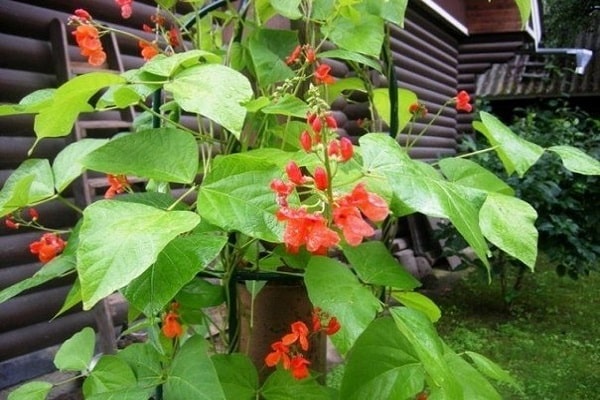
Soil preparation
First of all, you need to choose a well-lit area for beans. In a darkened place, full growth of culture is impossible. The best precursors to legumes are tomatoes, cabbage, and cucumbers. They are engaged in soil preparation in the fall. It is deeply dug up and fed with potassium or superphosphate formulations. This procedure promotes good development of plants and rich color of their flowers. Also, in the fall, humus is introduced into the soil, and in the spring it is fed with mineral fertilizers. Acidic soils are limed before planting.
Beans can grow and yield good yields anywhere, but in wet, cold weather, the crop is more vulnerable to disease and pests.
Note! The soil for planting decorative beans should not be oversaturated with nitrogen. No nitrogen fertilizers are applied to it. Otherwise, the yield will be reduced due to the excessive development of green mass.
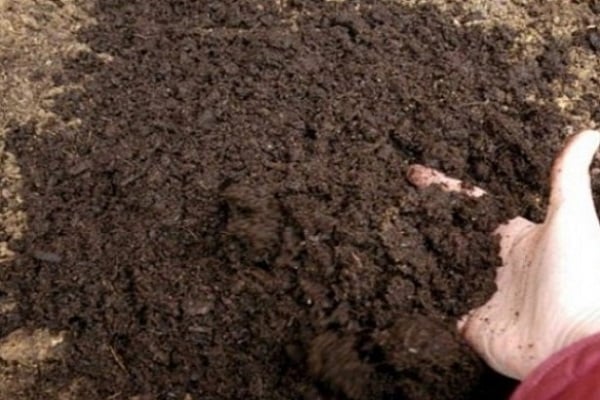
How to sow ornamental bean seeds
Before sowing, the soil must be moistened.3 grains are poured into each hole. The distance between the holes is at least 20 cm, between the rows - at least 40 cm. To create more comfortable conditions, the planted area is covered with a film. Also, this method will protect against possible frost.
In the southern regions, sowing in the ground can be carried out twice per season. In this case, preference is given to early maturing varieties, the growing season of which takes no more than 10 weeks.
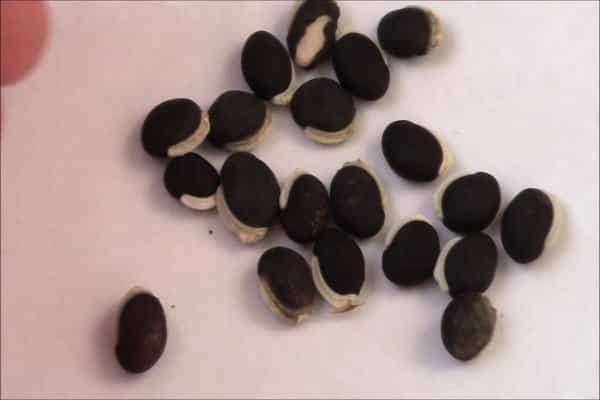
Planting ornamental beans by seedling method
For seedling cultivation, the culture is planted at the end of May. It is best to plant seeds in pots filled with peat. One grain is planted in each container. For the development of plants, an optimal temperature is required (from 18 to 22 degrees). In such conditions, the seeds will sprout rather quickly. When the plants reach 10 cm, they are necessarily provided with support. Shoots do not pinch.
Not yet developed plants are transplanted into open ground. Otherwise, they will not be able to quickly adapt to new conditions, which will negatively affect the process of their further growth.
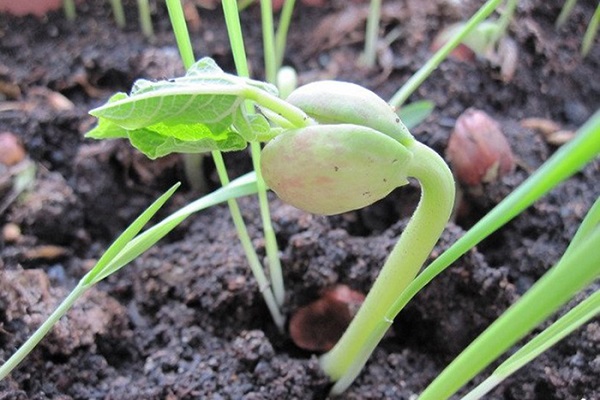
Caring for ornamental beans
The beans absolutely cannot stand cold temperatures. Even mature plants succumb to the negative effects of cold, not to mention young seedlings. Therefore, immediately after planting the culture, the site is covered with a film. This will provide the necessary conditions for growth and protect against low temperatures, because the weather conditions are known for their inconsistency, especially in recent years.
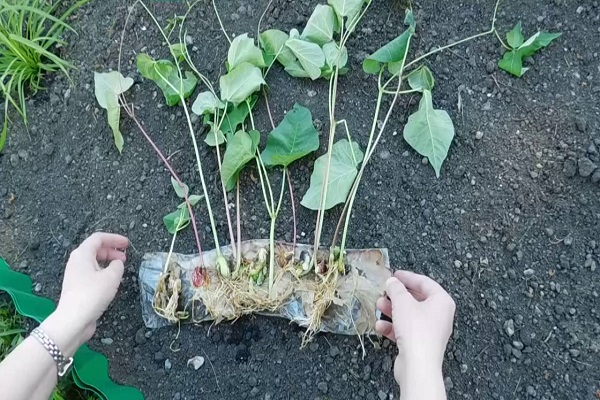
Watering features
Regular watering is of great importance in the development of culture. Especially during hot and dry weather. The beans are watered as soon as a dry crust forms on the ground. Before flowering, watering is carried out more often, the plants should receive moisture at least twice a week.
Also, the plants are watered after each weeding. You can water directly from the spout of the watering can, pour water into the middle of the rows. It is important that the water is purified and does not contain impurities.
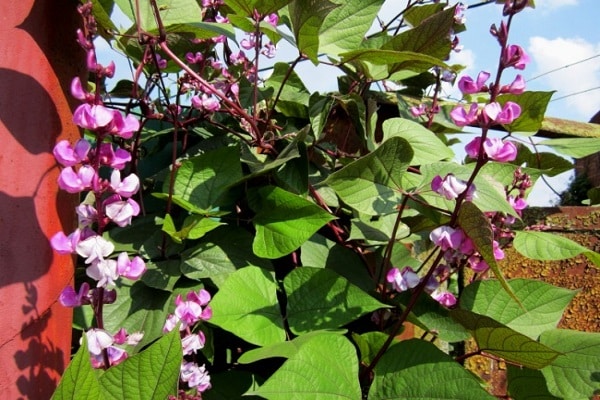
Top dressing
It should be noted right away that beans are not fed with fresh manure. For these purposes, organic or superphosphate compositions are used. It is unacceptable that the mixtures fall on the leaves of plants, otherwise they may get burned. Therefore, dry dressings are laid out directly on the soil, and liquid dressings are carefully applied between the rows, using a watering can.
Mulching is of great benefit to culture. Gardeners use sawdust, hay or straw for these purposes.
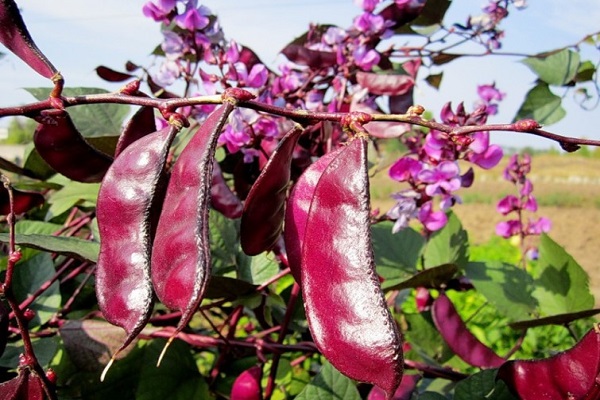
Bean garter
Curly and asparagus crop varieties need a mandatory garter. A special support is erected near them (wire, mesh or thick twine). Some gardeners, not wanting to bother with the posts, drive wooden stakes 1.5-2 m high near the bushes. In the process of plant growth, their stems are directed to the support, after which they twist onto it independently.

Diseases
Like any garden crop, ornamental beans can be susceptible to diseases and pests. The most common cultural diseases are:
- Bacteriosis. The name of this disease speaks for itself. It is caused by various types of bacteria. A characteristic feature of the disease is the appearance of yellowish spots on the leaves, in the center of which brown areas appear over time. The reason for the development of bacteriosis is that pathogenic microorganisms are initially present on beans. Therefore, as a prophylaxis for this disease, the seeds are heated for about two hours at a temperature of 60 degrees. The chances of being infected with bacteriosis increase in unfavorable weather conditions. To prevent the disease, the introduction of 1% Bordeaux liquid and mineral compositions into the soil is used.
- Anthracnose. It is a fungal disease that develops in wet and cold weather. The disease is manifested by the formation of yellow spots over the entire surface of the plants.Leaves turn yellow and die over time. As a preventive measure for the disease, seeds must be carefully selected before planting. They shouldn't show any signs of illness. Before planting, they are soaked in a weak solution of potassium permanganate. If the disease appears on at least one of the leaves, the affected area must be removed, since anthracnose is very contagious. When a disease is detected, the beans are sprayed with Bordeaux liquid.
It is important to remember that pathogenic microorganisms tend to persist in the soil. Therefore, it will be possible to re-plant the beans on the same site no earlier than three years later.

Pests
Most often, ornamental beans are attacked by whiteflies, aphids, and sprout flies. However, pests can overtake the culture not only during the growth process. Often, bugs start in beans that are in storage. This applies to grain aphids, which are especially common in storage. Beetles lay larvae on the grains, which leads to their rotting and blackening.
To avoid insect attacks, it is important to harvest on time. If the pods are cracked, pests are more likely to start in them. If small bugs have already started, then the fruits must be determined for several days in the freezer or treated with steam. Store grains in a dry and airtight place. If it is a glass jar, then it must be tightly closed with a lid.
During the growth process, decorative beans can be treated with agrochemicals no more than once, strictly observing the proportions indicated by the manufacturer on the package.
